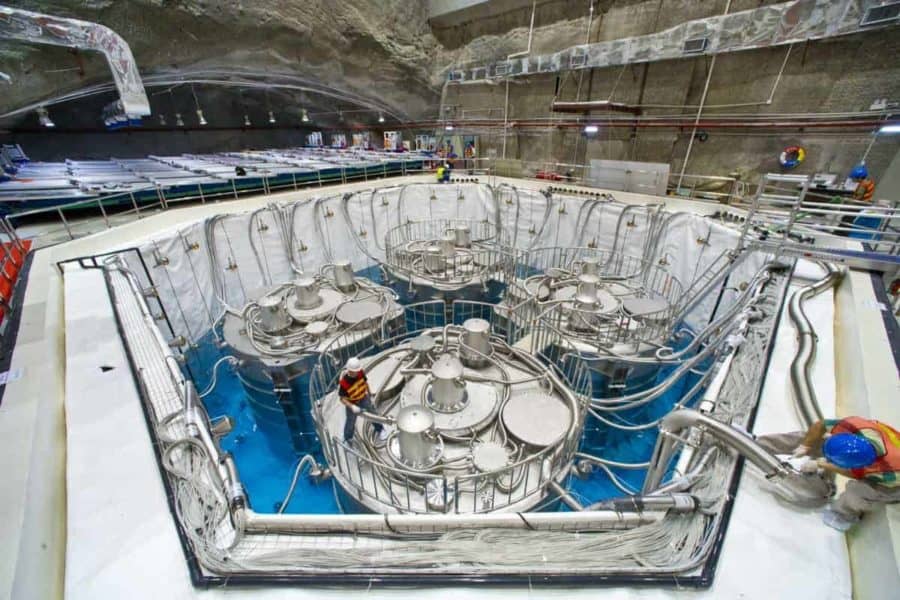This is part of a recurring series highlighting ongoing Berkeley Lab work in international physics collaborations during the COVID-19 pandemic.
Largely unaffected by the pandemic, the Daya Bay reactor neutrino experiment in Shenzen, China, has continued to pump data to remote supercomputers for analyses.
“Since 2017, we have instituted remote shifts so that members don’t have to travel to Daya Bay for babysitting the operation of the experiment,” said Kam-Biu Luk, a co-spokesperson for the Daya Bay collaboration who is a faculty senior scientist at Berkeley Lab and a physics professor at UC Berkeley.
“We can monitor the health of the experiment even with a cell phone. As a matter of fact, I have stopped and checked the status of the experiment with my iPhone while I was getting groceries with my wife,” he added.
The experiment, which first launched in 2011, is designed to capture signals for nuclear reactor-produced particles known as antineutrinos that are detected by sensors in liquid-filled tanks.
Its goal is to provide new insight about the neutrino properties – neutrinos can switch among three known varieties, known as flavors, for example, and can pass through most matter unchanged and uninterrupted. And the experiment has already contributed new findings about neutrinos.
The Daya Bay international collaboration involves more than 200 researchers at about 40 institutions in Asia, Europe, and the U.S., and Luk noted that the collaboration is fortunate in its existing capacity for remote work. “We are used to holding meetings remotely across different time zones,” he said. “As a result, life is as usual in this regard.”
While the absence of face-to-face discussions is a downside during this time of widespread shelter-in-place orders, Luk said that without daily car commuting to the office there is now more time to spend on the science of the experiment.
“Many of us now can focus on computing activities and data analysis with less distraction,” he said. “Considering how disruptive this COVID-19 pandemic is to societies, it is kind of a miracle that we haven’t been negatively impacted in the data movement.”
Experiment: Daya Bay reactor neutrino experiment
About: The Daya Bay reactor neutrino experiment is designed to measure the properties of ghostly particles called neutrinos, and more specifically reactor-produced antineutrinos.
Location: Daya Bay Nuclear Power Plant complex, Shenzen, China.
Role: Berkeley Lab’s Kam-Biu Luk, co-spokesperson for the Daya Bay experiment, leads U.S. participation in the experiment.
Website: http://dayabay.ihep.ac.cn/


